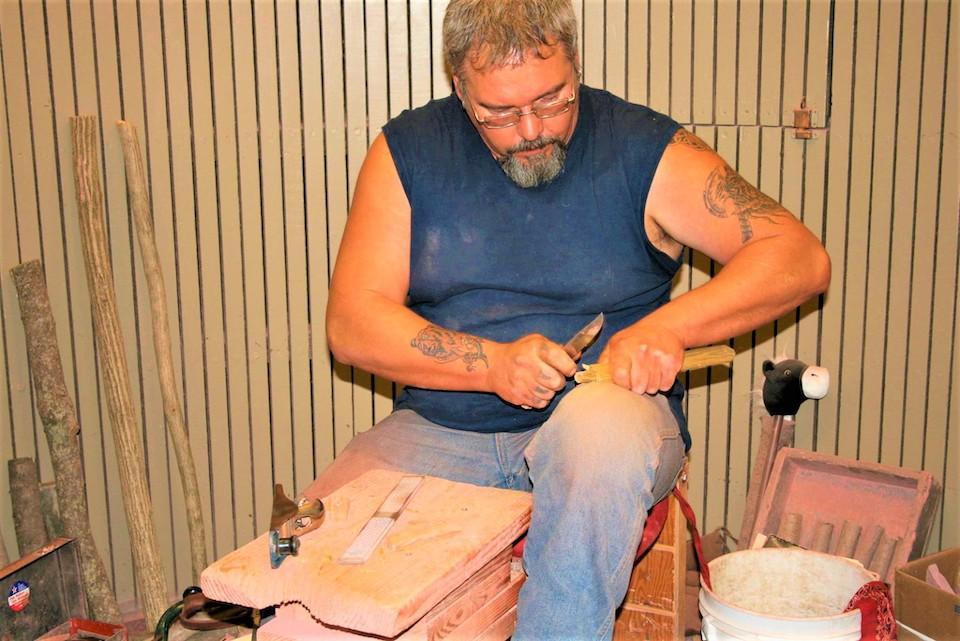
While pipestone will continue to be carved into various objects, pipes made from it will not be sold at Pipestone National Monument's visitor center/NPS
Pipes carved from pipestone will no longer be sold at the visitor center at Pipestone National Monument out of respect for Native American beliefs. The National Park Service and the Pipestone Indian Shrine Association reached that decision in consultation with federally recognized tribes associated with the Monument.
The cultural demonstration program at the monument, located in Pipestone, Minnesota, will continue, with added financial support from the National Park Service. This impactful interpretive program employs Native American carvers and craftspeople to share their culture and history with the public. The store at the monument will continue to offer Native American-made items, including small pipestone crafts with additional information about their significance. The Shrine will open a second location in downtown Pipestone.
“We respect that there are many different points of view about pipestone, and we are committed to learning from the perspectives of tribes and descendant communities,” said monument Superintendent Lauren Blacik. “We know there are and will be different opinions about the decision to end pipe sales at the monument, and we appreciate the efforts made by the Shrine, tribes, craftspeople, and local partners to resolve this complex and long-standing issue.”
Pipestone is a metamorphic clay (silicate of alumina) argillite or catlinite (named after George Catlin). According to the National Park Service, "The red color results from oxidation of trace amounts of iron. The formation of the soft red stone called pipestone began about 1.2 billion years ago when oceans covered Minnesota. Layers of clay and sand collected on the ocean floor and became buried by other sedimentary materials."
Law and policy direct federal agencies to consult with tribes on topics concerning their ancestral lands. Pipestone National Monument consults regularly with 23 tribes based on their historic use of the quarries, for some tribes stretching back hundreds of years or more.
For decades, the National Park Service has been aware of different perspectives about whether and how pipestone should be sold. In 2013, several tribes requested formal, government-to-government consultation on the issue. Since then, the National Park Service has received considerable feedback from tribes, mostly opposing pipe sales at the monument.
“We stand strong with the consensus of the tribes who also protect this sacred ground seen as the blood of our people,” said Faith Spotted Eagle, chair of the Ihanktonwan Treaty Steering Committee. The 1858 Treaty of the Yankton protected the quarries as a part of the Ihanktonwan reservation. “We also remember the numerous spiritual people, some of whom have gone on to the spirit world, who fought for this on spiritual runs, numerous meetings, ceremonies, and continual vigilance.”
“This decision is generations in the making," said Dyan Youpee, tribal historic preservation officer of the Fort Peck Assiniboine & Sioux Tribes. "When I first came to Pipestone as a child, I had so many questions about how these sacred resources were being cared for and why we were not managing them ourselves. Today we are involved in the protection of our sacred resources, and I am hopeful that future generations will not have the same worries I did. They will know they are a part of preserving pipestone."
The Shrine is the official cooperating association partner of Pipestone National Monument and has managed the store at the visitor center since 1958. The National Park Service and the Shrine work together to choose sales items and resolve any problems concerning the store at the Monument.
Pipes are central to many Native American ceremonial practices and traditions, and the decision to carry a pipe is a deep personal, spiritual, and cultural responsibility. “We have come to understand that decisions about pipe carrying are most appropriately made without involvement by the National Park Service,” said Blacik.
Many local quarriers and carvers working today are the third-, fourth-, and fifth-generation in their families to carry on the tradition.



Comments
Mine is sacred to me . I have Native Americans in my bloodline and my pipe is my conduit to them and the rest of my family that has left this earth ahead of me .